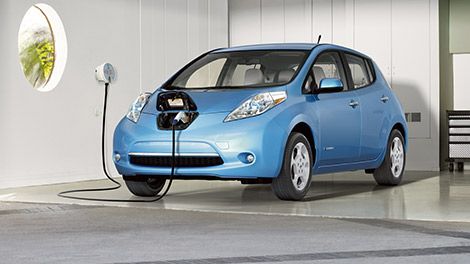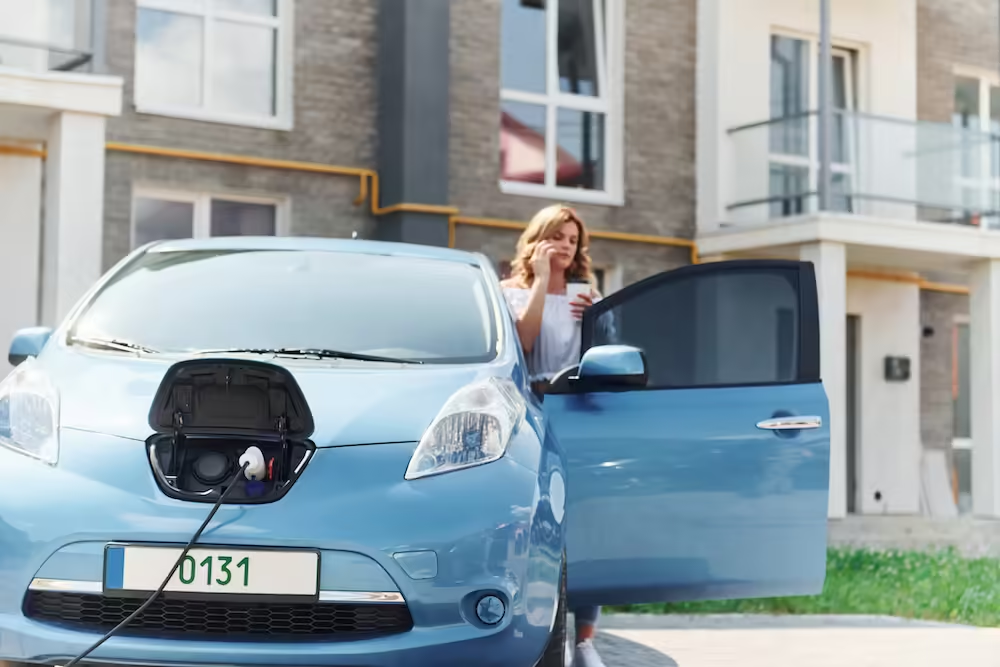
As electric vehicles (EVs) continue to gain popularity, more and more homeowners are considering installing home charging stations to power their EVs conveniently. Charging your electric car at home offers numerous advantages—it’s cheaper, more convenient, and can significantly reduce the reliance on public charging networks. However, setting up a home EV charging station requires careful planning, proper equipment, and ongoing maintenance to ensure safe and efficient charging.
In this blog post, we’ll walk you through the key considerations for setting up a home EV charger, the types of chargers available, installation tips, maintenance advice, and the benefits of charging your EV from the comfort of your home.

1. Why Install a Home EV Charging Station?
Before diving into the technicalities, let’s explore why installing a home charging station is beneficial for EV owners.
Convenience:
One of the primary benefits of a home EV charger is convenience. Instead of searching for a public charging station or waiting in line to charge your vehicle, you can simply plug in your car at home, typically overnight. By the time you wake up, your EV is fully charged and ready for the day ahead.
Cost-Effective Charging:
Charging your EV at home is generally cheaper than using public charging stations, especially if you take advantage of off-peak electricity rates. Some utility companies offer special EV charging plans, allowing homeowners to charge their vehicles at lower rates during specific hours, reducing energy costs even further.
Time-Saving:
With a home charging station, there’s no need to schedule trips to public chargers or adjust your driving habits around the availability of nearby charging points. You can simply charge your car while you go about your daily routine, making EV ownership more seamless.
Increased Property Value:
Installing a home EV charger can also increase your property value. As more people switch to electric vehicles, homes equipped with charging stations will become increasingly attractive to potential buyers. This can be especially important in areas with high EV adoption rates.

2. Understanding EV Charger Types
Before installing a home charging station, it’s essential to understand the different types of chargers available. EV chargers are classified into three levels, each offering different charging speeds and installation requirements.
Level 1 Charger (120V):
Level 1 chargers use a standard 120-volt household outlet and are often provided by EV manufacturers with the vehicle. While convenient, Level 1 chargers are the slowest option, typically adding about 3-5 miles of range per hour of charging. For homeowners who only drive short distances each day or who have access to charging overnight, a Level 1 charger might suffice. However, for those with long commutes or multiple vehicles, upgrading to a faster charger is more practical.
Level 2 Charger (240V):
Level 2 chargers are the most common choice for home installations. These chargers require a dedicated 240-volt outlet (similar to those used for large household appliances like dryers) and can add 25-30 miles of range per hour of charging. Level 2 chargers significantly reduce charging time, allowing EV owners to fully charge their vehicles in just a few hours. Most home EV chargers on the market today fall into the Level 2 category, and installation typically requires the assistance of a licensed electrician.
Level 3 Charger (DC Fast Charging):
Level 3 chargers, or DC fast chargers, are typically reserved for commercial settings, as they provide extremely fast charging speeds—sometimes up to 80% charge in under 30 minutes. However, due to their high power requirements and cost, they are not practical for home use. Level 3 chargers are most commonly found at public charging stations along highways and in urban areas.
Key takeaway:
For most homeowners, a Level 2 charger strikes the right balance between cost, charging speed, and convenience, making it the ideal choice for home EV charging.
3. Steps to Setting Up a Home EV Charging Station
Setting up a home EV charger involves more than just plugging a charger into a wall. To ensure your charging station is safe, efficient, and up to code, here are the steps to follow:
Step 1: Assess Your Home’s Electrical Capacity:
Before installing a Level 2 charger, assess your home’s electrical system. Most Level 2 chargers require a dedicated 240-volt circuit, which may need an electrical panel upgrade if your existing system cannot handle the additional load. Consult with a licensed electrician to determine whether your home’s electrical capacity is sufficient for the new charger or if an upgrade is necessary.
Step 2: Choose the Right Charger:
Select a charger that fits your vehicle and your home’s charging needs. Look for features like adjustable charging speeds, smart charging capabilities (which allow you to schedule charging during off-peak hours), and compatibility with your EV model. Some popular Level 2 home chargers include Tesla Wall Connector, ChargePoint Home Flex, and JuiceBox 40.
Step 3: Hire a Licensed Electrician:
It’s highly recommended to hire a licensed electrician to handle the installation of your home charging station. The electrician will install the 240-volt outlet (if necessary), connect the charger to your home’s electrical panel, and ensure the installation complies with local electrical codes and safety standards.
Step 4: Apply for Permits and Incentives:
Depending on your location, you may need to obtain a permit to install a home charging station. Additionally, many local governments and utility companies offer incentives, rebates, or tax credits to help offset the cost of installing an EV charger. Be sure to research available programs in your area to take full advantage of these savings.
Step 5: Consider Smart Charging Features:
Many Level 2 chargers come with smart features that allow you to monitor and control your charger via a mobile app. These features include tracking your energy usage, scheduling charging sessions during off-peak hours, and receiving notifications about the charging status of your vehicle. Smart chargers are an excellent option for homeowners looking to optimize energy efficiency and reduce costs.
Key takeaway:
To safely and efficiently install a home EV charging station, assess your home’s electrical system, select the right charger, hire a licensed electrician, and explore available permits and incentives.
4. Maintaining Your Home EV Charging Station
Once your EV charger is installed, regular maintenance is essential to ensure it operates safely and efficiently. While home chargers are generally low-maintenance, following a few key practices can extend the lifespan of your charger and prevent potential issues.
Inspect the Charger Regularly:
Periodically check the charging cable, plug, and charging port for signs of wear and tear. Look for frayed wires, loose connections, or any visible damage that could pose a safety hazard. If you notice any issues, contact a professional for repairs or replacement.
Keep the Charger Clean:
Dirt, dust, and debris can accumulate on the charger, especially if it’s installed outdoors. Clean the charger regularly with a dry or slightly damp cloth to prevent dust from affecting its performance. Avoid using harsh chemicals or abrasive materials that could damage the charger.
Protect the Charger from Weather:
If your charger is installed outdoors, make sure it is weatherproof and rated for outdoor use. Exposure to rain, snow, and extreme temperatures can affect the charger’s performance. Consider installing a protective cover or shelter over the charger to shield it from the elements.
Monitor Charging Efficiency:
If you notice that your EV is taking longer to charge than usual, it may indicate an issue with the charger or your home’s electrical system. Track your charger’s performance using any built-in monitoring features or a smart charging app to identify any abnormalities.
Schedule Periodic Electrical Inspections:
As part of your home’s routine electrical maintenance, schedule periodic inspections by a licensed electrician to ensure that your EV charger and its connections are in good working condition. This is particularly important if your charger is used frequently or if you’ve made any modifications to your home’s electrical system.
Key takeaway:
To keep your home EV charger operating efficiently, regularly inspect and clean the charger, protect it from weather, monitor its performance, and schedule periodic electrical inspections.
5. The Benefits of Home EV Charging
Installing a home EV charging station offers numerous benefits that can enhance your electric vehicle ownership experience:
- Convenience: Charging at home eliminates the need for frequent trips to public charging stations, saving you time and reducing stress.
- Cost Savings: Charging at home is typically more cost-effective than public charging, especially if you take advantage of off-peak electricity rates.
- Increased Property Value: A home equipped with an EV charger is an attractive feature for potential buyers, especially as EV adoption grows.
- Energy Independence: Charging your EV at home, especially if paired with a solar panel system, gives you more control over your energy consumption and reduces reliance on external energy sources.
Conclusion
Installing a home EV charging station is a smart investment for any electric vehicle owner, providing convenience, cost savings, and peace of mind. By understanding the different types of chargers, planning your installation carefully, and maintaining your charger regularly, you can enjoy the benefits of home charging for years to come.
As electric vehicles become more prevalent, the infrastructure supporting them will continue to evolve. Installing a home charging station not only prepares you for the future but also enhances the overall experience of owning and driving an electric vehicle. Whether you’re a seasoned EV driver or a new adopter, setting up a home EV charger is a step towards a more sustainable and hassle-free driving experience.

Leave a Reply